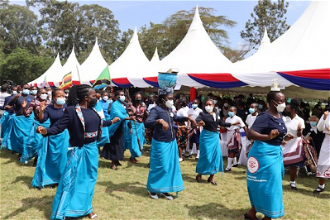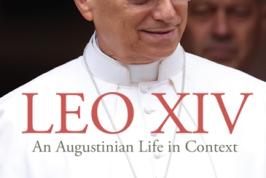Book: Stepinac His Life and Times

Gracewing Publications
Stepinac His Life and Times by Robin Harris, Gracewing Publications
The heroism of those who stood up to communism and naziism is always inspiring. Names like Mindzenty in Hungary, Wsyzynski in Poland, Beran in the Czech Republic, Von Galen in Germany and Stepinac in Yugoslavia should ring in our ears. This biography does not disappoint.
The social doctrine of the church radiates out from this Cardinal. It is not difficult to see his heroic virtues under great pressure. He does not shrink from the challenge.
The impression from history is that all his fellow bishops must have been behind him but that was not always the case, which makes the story even more impressive.
What can happen to society when there is no Christian influence is made abundantly clear. Moving too are the efforts of ordinary citizens, many of them Catholics, to help the Jews, at the risk of their own lives. Many have been recognized as Righteous among the Nations. When often we don't hear of the contribution of Catholics these stories are important for us to know.
The brutality in Yugoslavia has often been described as worse than elsewhere in this not too central theatre of war.
New data, including secret police files stored in Croatian State archives, make this book of interest in shedding light on the show trial of Stepinac in 1946. He led the Catholic Church in Croatia during the period of Nazi occupation and later during the Communist era. Having inspired the Catholic resistance to the communist persecution, he was sentenced to sixteen years hard labour. He spent the last 10 of these under strict house arrest in a small village and eventually died there. When allowed to say Mass in public people in mainly Catholic Croatia flocked to listen to him. This made the authorities even more determined to break him.
He spoke frequently of abortion and blasphemous oaths.
Esther Gitman the historian of Jewish recue in Croatia and herself a holocaust survivor, had occasion to note: "During my travels in the countries of the former Yugoslavia, Israel and the United States the name most frequently mentioned in my seventy-two recorded testimonies was that of Archbishop Stepinac".
The book highlights the difficulties of maneuvering at the time and makes the attacks on the role of Pope Pius XII seem a joke. The main goal was to save lives, all lives.
Robin Harris has done an excellent, scholarly work which hopefully will dispel all delays and doubts about the canonization of Cardinal Stepinac. It is story of betrayal, intrigue, and isolation, matched with leadership, loyalty and courage. The human and supernatural reactions of people in communist controlled countries and what they had to endure is vividly portrayed and backed by expert research.
250 priests were murdered and 300 jailed during Marshal Tito's reign of terror. One bishop had petrol poured over him and was set alight. The mother of Stepinac came to visit, he spoke words of encouragement to her. His nephew was driven mad by communist mistreatment, all in an effort to make him testify against his uncle.
When Tito separated from Stalin he became the darling of the western powers, and received much aid. This left Stepinac even more out in the cold. In spite of pressure from Tito he refused to leave Croatia. Speculation about his ultimate poisoning has never been fully proven but suspicion remains. His body was exhumed after many years and traces of suspicious substances were found on analysis in Rome.
He encouraged the founding of a secular institute in the early1950s, at the time a new juridical structure in the Church, to help bring the message of the gospel to individuals and families intimidated or oppressed by the prevailing anti-Christian ideology.
A national association of priests, sympathetic to communism and Tito, was staunchly resisted by Stepinac. Faithful priests in prison celebrated Mass with hosts smuggled into the prison in the form of tablets, they used wine from fermented raisins.
When the communist government fell and a new democratically elected parliament took over in 1992 one of their early acts was to condemn the sentence passed on Stepinac in 1946, but history cannot be swiftly reversed, the long campaign of slander left its mark.
The picture is that of a deeply spiritual man with a will of steel, in spite of ragged nerves. His constant reference is the teaching of the Church. He died at the age of 62 looking at an image of Our Lady.
Later documents revealed the enormous difficulty he had in his mission of keeping the Church in Croatia faithful and clean. They confirm the unique, historic significance of his role. He could have obtained his liberty at any stage by doing a deal with the communists, but they never succeeded in breaking him.
Stepinac was beatified, appropriately by Pope St John Paul II, in 1998. His canonisation is still pending, due to protests from the Serbian Orthodox Church.
While he helped many Jews he was accused of not helping the Serbian Orthodox enough. The communists refused to let Serbs and Jews testify in his defence at his trial. This book sets out to put the record straight, He was interested in all lives.
His motto was "in te Domine speravi".His hope could be described as hope when all grounds for it are absent. He encouraged his priests from prison : "Don't give up, have great confidence in God. Though the stars fall, God remains".


















